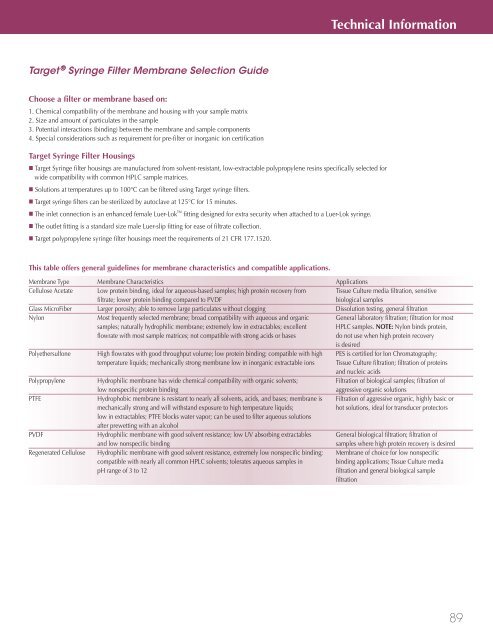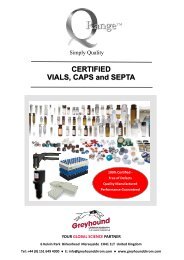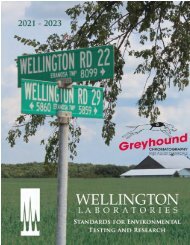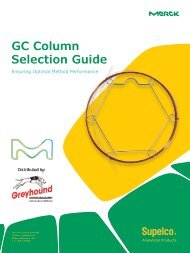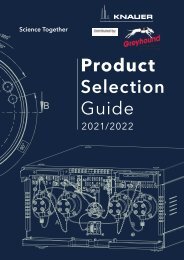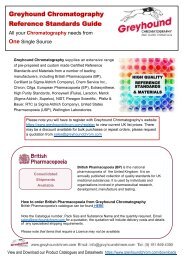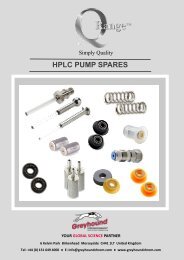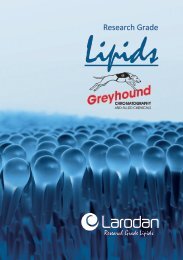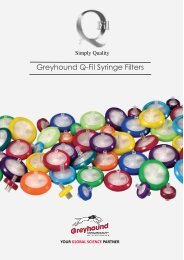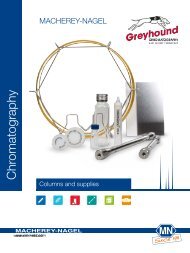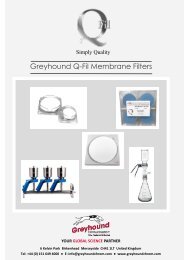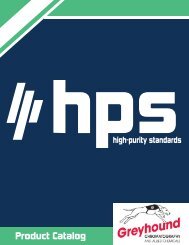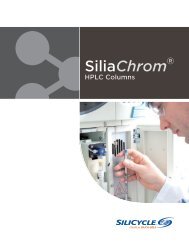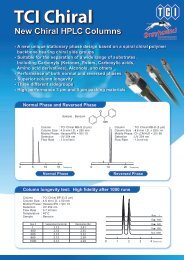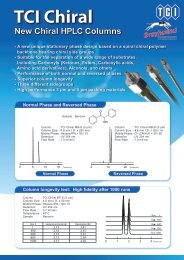National Scientific 2008-9 Catalogue
This catalogue contains product details of products from National Scientific. If you have any questions about National Scientific products or wish to discuss the pricing and delivery of products from this manufacturer, or any of the many other Manufacturers we represent, please do not hesitate to contact us either by email Sales@greyhoundchrom.com or rachel@greyhoundchrom.com (Greyhound Chromatography’s Sales Manager). We are proud of our long-standing relationships with our customers and agents. We value our agent network highly and are constantly looking to appoint new agents with the right expertise, in areas where we are not represented. Please email sales@greyhoundchrom.com if you are interested in becoming one of our agents. Visit https://www.greyhoundchrom.com for a full range of Chromatography consumables, including Certified Reference Standards and Materials, Solvents, Reagents and Laboratory Chemicals.
This catalogue contains product details of products from National Scientific. If you have any questions about National Scientific products or wish to discuss the pricing and delivery of products from this manufacturer, or any of the many other Manufacturers we represent, please do not hesitate to contact us either by email Sales@greyhoundchrom.com or rachel@greyhoundchrom.com (Greyhound Chromatography’s Sales Manager).
We are proud of our long-standing relationships with our customers and agents. We value our agent network highly and are constantly looking to appoint new agents with the right expertise, in areas where we are not represented. Please email sales@greyhoundchrom.com if you are interested in becoming one of our agents.
Visit https://www.greyhoundchrom.com for a full range of Chromatography consumables, including Certified Reference Standards and Materials, Solvents, Reagents and Laboratory Chemicals.
Create successful ePaper yourself
Turn your PDF publications into a flip-book with our unique Google optimized e-Paper software.
Technical Information<br />
Targete Syringe Filter Membrane Selection Guide<br />
Choose a filter or membrane based on:<br />
1. Chemical compatibility of the membrane and housing with your sample matrix<br />
2. Size and amount of particulates in the sample<br />
3. Potential interactions (binding) between the membrane and sample components<br />
4. Special considerations such as requirement for pre-filter or inorganic ion certification<br />
Target Syringe Filter Housings<br />
Target Syringe filter housings are manufactured from solvent-resistant, low-extractable polypropylene resins specifically selected for<br />
wide compatibility with common HPLC sample matrices.<br />
Solutions at temperatures up to 100°C can be filtered using Target syringe filters.<br />
Target syringe filters can be sterilized by autoclave at 125°C for 15 minutes.<br />
The inlet connection is an enhanced female Luer-Lokq fitting designed for extra security when attached to a Luer-Lok syringe.<br />
The outlet fitting is a standard size male Luer-slip fitting for ease of filtrate collection.<br />
Target polypropylene syringe filter housings meet the requirements of 21 CFR 177.1520.<br />
This table offers general guidelines for membrane characteristics and compatible applications.<br />
Membrane Type Membrane Characteristics Applications<br />
Cellulose Acetate Low protein binding, ideal for aqueous-based samples; high protein recovery from Tissue Culture media filtration, sensitive<br />
filtrate; lower protein binding compared to PVDF<br />
biological samples<br />
Glass MicroFiber Larger porosity; able to remove large particulates without clogging Dissolution testing, general filtration<br />
Nylon Most frequently selected membrane; broad compatibility with aqueous and organic General laboratory filtration; filtration for most<br />
samples; naturally hydrophilic membrane; extremely low in extractables; excellent HPLC samples. NOTE: Nylon binds protein,<br />
flowrate with most sample matrices; not compatible with strong acids or bases<br />
do not use when high protein recovery<br />
is desired<br />
Polyethersulfone High flowrates with good throughput volume; low protein binding; compatible with high PES is certified for Ion Chromatography;<br />
temperature liquids; mechanically strong membrane low in inorganic extractable ions Tissue Culture filtration; filtration of proteins<br />
and nucleic acids<br />
Polypropylene Hydrophilic membrane has wide chemical compatibility with organic solvents; Filtration of biological samples; filtration of<br />
low nonspecific protein binding<br />
aggressive organic solutions<br />
PTFE Hydrophobic membrane is resistant to nearly all solvents, acids, and bases; membrane is Filtration of aggressive organic, highly basic or<br />
mechanically strong and will withstand exposure to high temperature liquids;<br />
hot solutions, ideal for transducer protectors<br />
low in extractables; PTFE blocks water vapor; can be used to filter aqueous solutions<br />
after prewetting with an alcohol<br />
PVDF Hydrophilic membrane with good solvent resistance; low UV absorbing extractables General biological filtration; filtration of<br />
and low nonspecific binding<br />
samples where high protein recovery is desired<br />
Regenerated Cellulose Hydrophilic membrane with good solvent resistance, extremely low nonspecific binding; Membrane of choice for low nonspecific<br />
compatible with nearly all common HPLC solvents; tolerates aqueous samples in<br />
binding applications; Tissue Culture media<br />
pH range of 3 to 12<br />
filtration and general biological sample<br />
filtration<br />
89


